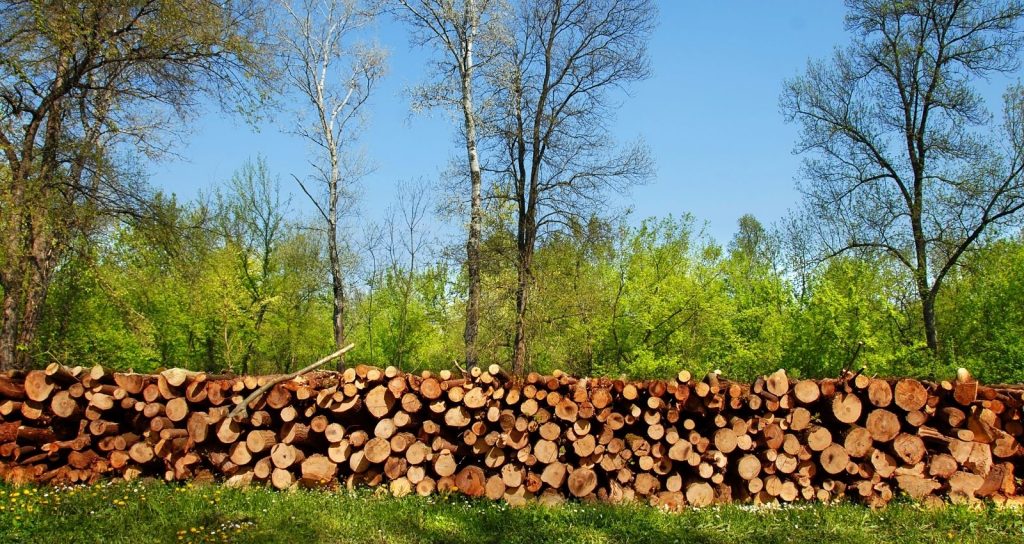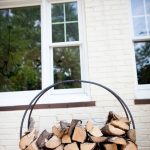Disclosure of Material Connection: Some of the links in this post may be "affiliate links." This means if you click on the link and purchase an item, I will receive an affiliate commission. Disclosure in accordance with the Federal Trade Commission's 16 CFR, Part 255. This site is a participant in the Amazon Services LLC Associates Program, an affiliate advertising program designed to provide a means for sites to earn advertising fees by advertising and linking to Amazon.
Disclosure of Material Connection: Some of the links in the post above are "affiliate links." This means if you click on the link and purchase the item, I will receive an affiliate commission. Regardless, I only recommend products or services I use personally and believe will add value to my readers. I am disclosing this in accordance with the Federal Trade Commission's 16 CFR, Part 255: "Guides Concerning the Use of Endorsements and Testimonials in Advertising."
For those of us who still rely on a fire for heat or ambiance, it may be all too easy to just chuck any bits of wood we have into our fire pit, or our fireplace. Firewood selection is more complicated than that, however. In this article, we will discuss the types that are best for an optimal burn—and some others you might want to stay away from.
What Is The Best Type of Firewood For a Fire Pit or Fireplace? Here’s Where to Start:
Due to its typical location, a fireplace is easier to use without risk—as long as common sense is used. A fire pit, being more mobile, is another matter. Below you will find a few recommendations to make your experience the good memory that it should be.
- Check for burn bans. Sometimes burning wood is temporarily restricted, which means your fire pit (and even your grill, in most cases) should not be used; violating this may result in hefty fines. Always check with the relevant authorities before using your fire pit or fireplace.
- Keep your distance. Stay away from curtains, furniture, anything paper such as books, and so on. Your fire should be in the open, with nothing hanging over it. The surrounding area should be kept clear of debris in a radio of roughly 10 feet.
- Mind how windy it is. Too much wind may make it harder to start a fire, and could blow burning bits where they shouldn’t be.
- Cover it. A spark screen will let your fire breathe just fine while keeping embers safely contained. They come in different sizes and shapes, and some even feature a sliding half so you can access your fire with your poker without having to remove the whole thing.
- Pad it. Many fire pits stand with the bottom too close to the ground, which may become a problem due to the extreme heat generated; a fire pit mat can easily remedy this.
- Never leave it unattended. A moment of relaxed vigilance may be the difference between a calm evening and a call to the fire department—or a trip to the ER. For similar reasons, whoever is in charge of tending to the fire should not drink, so their focus won’t suffer.
- Be ready for anything. Shovel and water, at the bare minimum; an extinguisher is even better. A fire blanket will do in a pinch, too.
- Only wood. Your fire pit is not built to maintain and endure combustion of other materials. Avoid burning general waste, and both your fire pit and the environment will thank you.
Boxes to Tick When Selecting Firewood
Further down we will be talking more in depth about specific wood types recommended for a fire pit, but before we get to that, here are a few factors to keep in mind before selection even commences.
1. Denser Is Better
Wood is, generally, split into two main categories: softwoods, and hardwoods. Softwoods are overall cheaper, but they produce a lesser fire that can even be loaded with fumes; they are also more likely to build up creosote in your chimney or fire pit. This is because many softwoods hold a higher concentration or sap and resin.
The hardwood sort, on the other hand, is the one most recommended for burning; since it is denser, it is easier to prepare for a nice fire, as we will see on our next point.
2. Dry as a Bone
Right after it is chopped, wood will be far too moist to burn at its best—about 60% water content; anything that goes into your fire pit or fire place, should be at no more than 20%, and preferably under 18%.
There are two ways to do this: one is a practice called ‘seasoning’ so named because you set our wood outside and let it sit for a minimum of 6 months before using. It’s an inexpensive method, but its results may vary, depending on factors such as the type of wood, whether it was fresh off the tree or already dead when chopped, when it was harvested (warmer months mean less moisture), and how it is stacked—which affects airflow. Thus, it can be difficult to tell just how long a specific stack of wood should be left out there: too little time, and it won’t be properly dry; too long, and it might decompose.
The second option: kiln-drying. Wood is placed into a special oven (kiln), and left baking for about 3 days at temperatures ranging between 120 and 220°F. Although it’s not free, this method is recommended due to it yielding much better, thorough results than seasoning at a fraction of the time. The extreme, sustained heat is also effective for eliminating harmful elements such as pests, mold and pesticides.
Whichever may be the option you pick, there is always the question of how to find out if your wood is ready; here are a few ways.
Look
Exposure to the sun will gradually turn your wood yellow; older wood will be gray. Visible growth rings, cracked ends, absence of mold, all of these will be good signs.
Smell
In this case, lack thereof. As it dries, wood will lose its smell of resin.
Sound
Smack two logs together. If they give off a sharp crack, then that is a good sign of their moisture being pretty low. It’s not a perfect method, however. Low temperatures, for example (32°F and below), can give wood that sharp sound we’re looking for even when fresh.
Meter
This one does require a small investment, but it’s worth it. A moisture meter will tell you the percentage of water your wood is holding within seconds, saving you the trouble of trying to assess it on your own.
3. No Scraps!
This one is important—a matter of health, in fact. However tempting it may be, it is best not to grab the following types of wood:
- Pressure-treated.
- Engineered or made for construction (plywood, medium-density fiberboard and so on)
- Painted or varnished.
- Driftwood.
- Any bits rotted, diseased or with vines.
Burning any of these will send noxious fumes into the air, which may be breathed by you or yours; in more severe cases, it may impact the environment.
Trees to Steer Clear Of
Burning any of the following species will cause excessive spitting, black smoke, lots of soot (and even creosote), or a combination of the aforementioned.
- Willow
- Poplar
- Sweet or horse chestnut
- Larch
- Spruce
- Pine, unless it is used just for kindling and not as the main fuel source.
A Few With Good Scents
There are certain trees that will not be so easy to dry, and won’t burn as effectively, but still enjoy a degree of popularity because of the nice aroma they give off. Apple, cherry, pear and walnut are just a few of the types you might want to seek out.
Best for Your Fireplace and Fire Pit
For a nice balance between affordability, ease to ignite and length of combustion, most enthusiasts would settle on one choice: ash. It’s so low on water, it will provide a decent burn even when green (i.e. freshly cut), though it will still be at its best when properly seasoned or kiln-dried. Below is a list of other species that are also optimal alternatives, as well as any caveats they may come with.
- Birch. Lights up easily, but burns fast; mixing it with slower-burning woods is usually recommended.
- Maple. Dense enough to burn for hours, and it gives off a nice aroma that makes it ideal for cooking. Note: silver maple is best avoided; it makes for decent firewood, but it may come with an unpleasant smell depending on what was growing around the tree the wood came from.
- Oak. Another popular choice for cooking and for warmth. Its density is both an advantage and a drawback: its burn is fairly slow, but it is also difficult to ignite and it requires at least 2 years to season properly.
- Beech. Its high density allows it to burn for a while; it comes with its own nice scent, too.
- Hickory. One of the most evocative campfire smells, it is also one of the firewoods with the highest heat output—over 28 million BTUs per cord (for wood, anything over 25 million BTUs is already pretty high).
What Is The Best Type of Firewood For a Fire Pit or Fireplace? In Closing
Finding the right wood for your fire pit or fireplace is not exactly a science. Some times you will want a fire that will go for hour, whereas certain occasions will call for wood that burns quicker just to entertain your guests for an hour or two. For an optimal choice, your own tastes and the particular needs of the occasion should always play a role.






